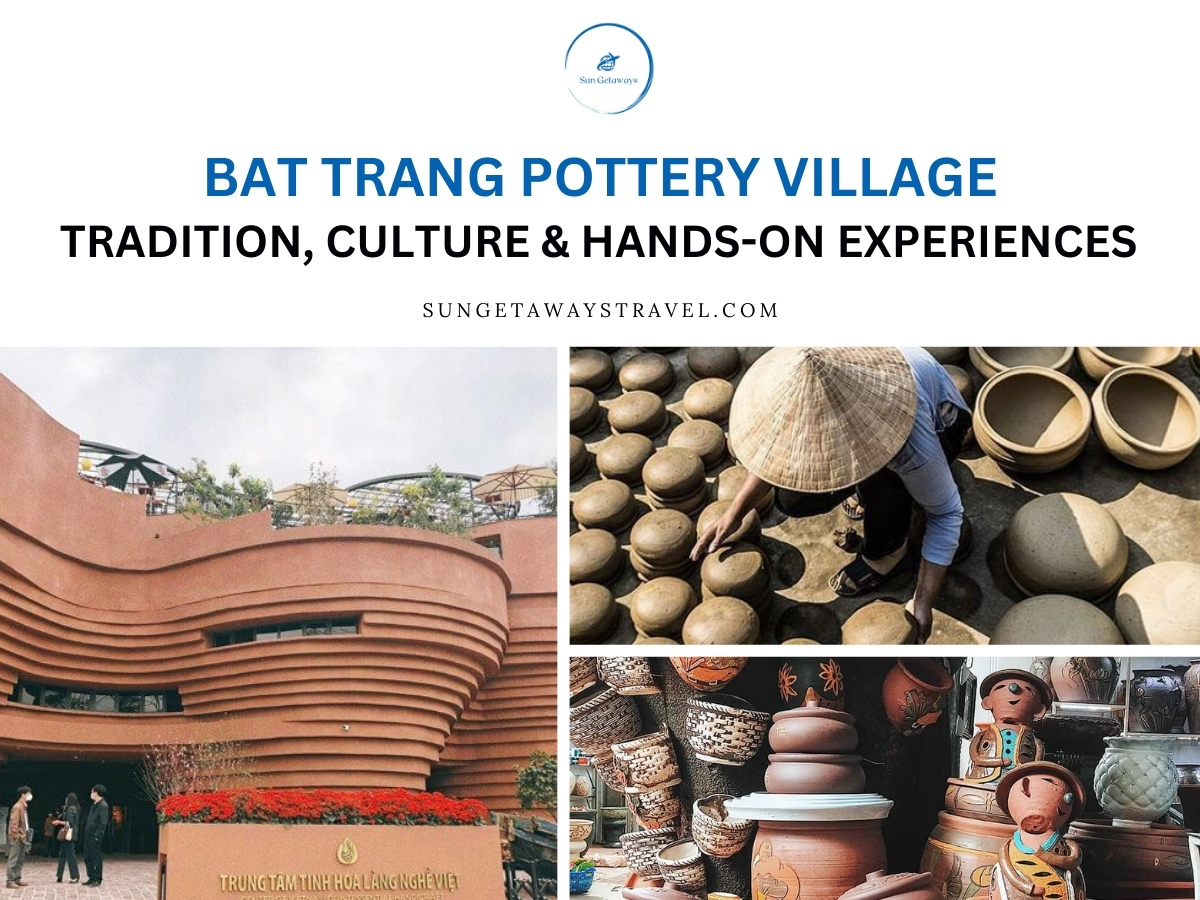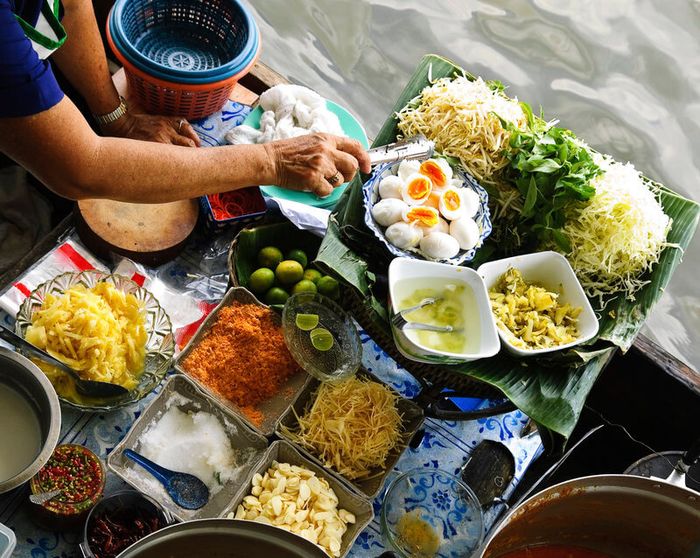Bat Trang Pottery Village: Tradition & Hands-on Experiences
 PhamDuong
PhamDuong Along the banks of the Red River lies Bat Trang Pottery Village, Vietnam’s most celebrated ceramic hub. For over seven centuries, its people have transformed humble clay into exquisite art, crafting objects that carry not only function but also spirit. Visiting Bat Trang is more than a stop on a travel itinerary—it is stepping into a living story of resilience, artistry, and cultural pride. Here, every kiln, every alley, and every hand-shaped bowl whispers the essence of Vietnamese tradition.
1. The History of Bat Trang Pottery – From Dynasty to Modern Day
The history of Bat Trang pottery stretches back to the 14th century, when skilled artisans from different villages gathered on fertile land beside the Red River. The site offered high-quality clay, a strategic trade route, and proximity to the imperial capital of Thang Long (present-day Hanoi). From the start, Bat Trang ceramics were prized for their durability, elegant glazes, and unique motifs.
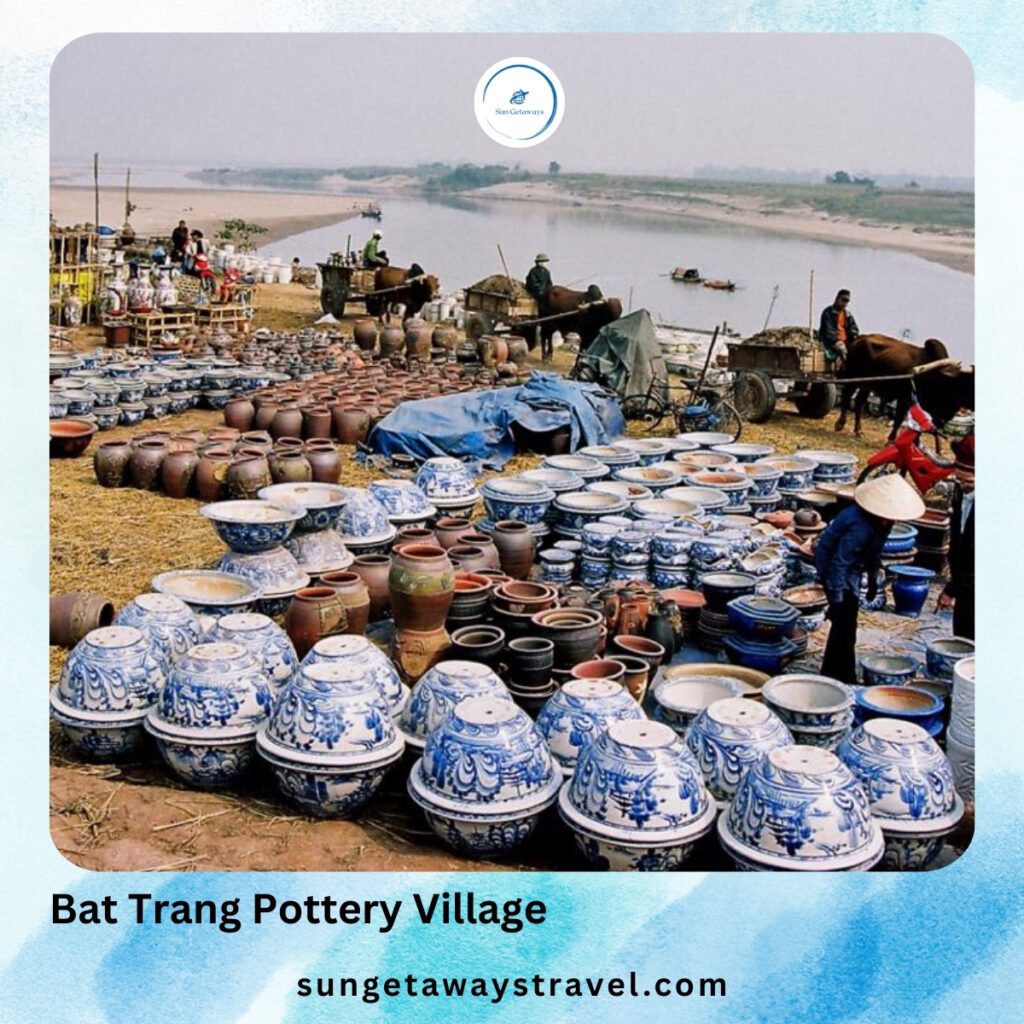

During the Le and Nguyen dynasties, Bat Trang became a supplier to both the royal court and international markets. Ships carried its wares across Asia, and later, to Europe. The artistry reflected not only Vietnamese identity but also cross-cultural exchanges—Chinese blue-and-white porcelain techniques, Japanese influence, and even European aesthetics during the colonial era.
The village endured wars, colonial upheavals, and economic challenges, yet the kilns never went cold. Today, Bat Trang remains a testament to adaptability: balancing modern innovation with traditions passed down through generations. When scholars speak of the history of Bat Trang pottery, they highlight both continuity and creativity—an unbroken line of artisans who shaped clay into Vietnam’s cultural fingerprint.
2. Architecture of Bat Trang Pottery Village
Walking into Bat Trang Pottery Village feels like stepping into another century. Narrow alleys paved with old bricks lead to moss-covered walls and open courtyards. Traditional houses, with tiled roofs and carved wooden beams, stand beside workshops echoing with the hum of potter’s wheels.


The village has both ancient kilns—long, dragon-shaped structures once fired with wood—and modern gas kilns that reflect contemporary techniques. Temples dedicated to craft ancestors remind visitors that pottery here is not just commerce but also spirituality.
What makes the village enchanting is its blend of old and new: children shaping clay at roadside stalls, artisans chiseling giant vases, and designers experimenting with modern aesthetics for global markets. The atmosphere is both nostalgic and alive.
👉 Ready to get your hands dirty with traditional crafts? Discover an authentic hands-on art experience in Hanoi here.
3. Daily Life in Bat Trang Pottery Village
Behind every ceramic piece lies a rhythm of daily life. Families in Bat Trang Pottery Village often work together, with grandparents preparing clay, parents shaping vessels, and children painting or managing stalls. The home and the workshop blur into one space—courtyards filled with drying bowls, living rooms doubling as display shops.
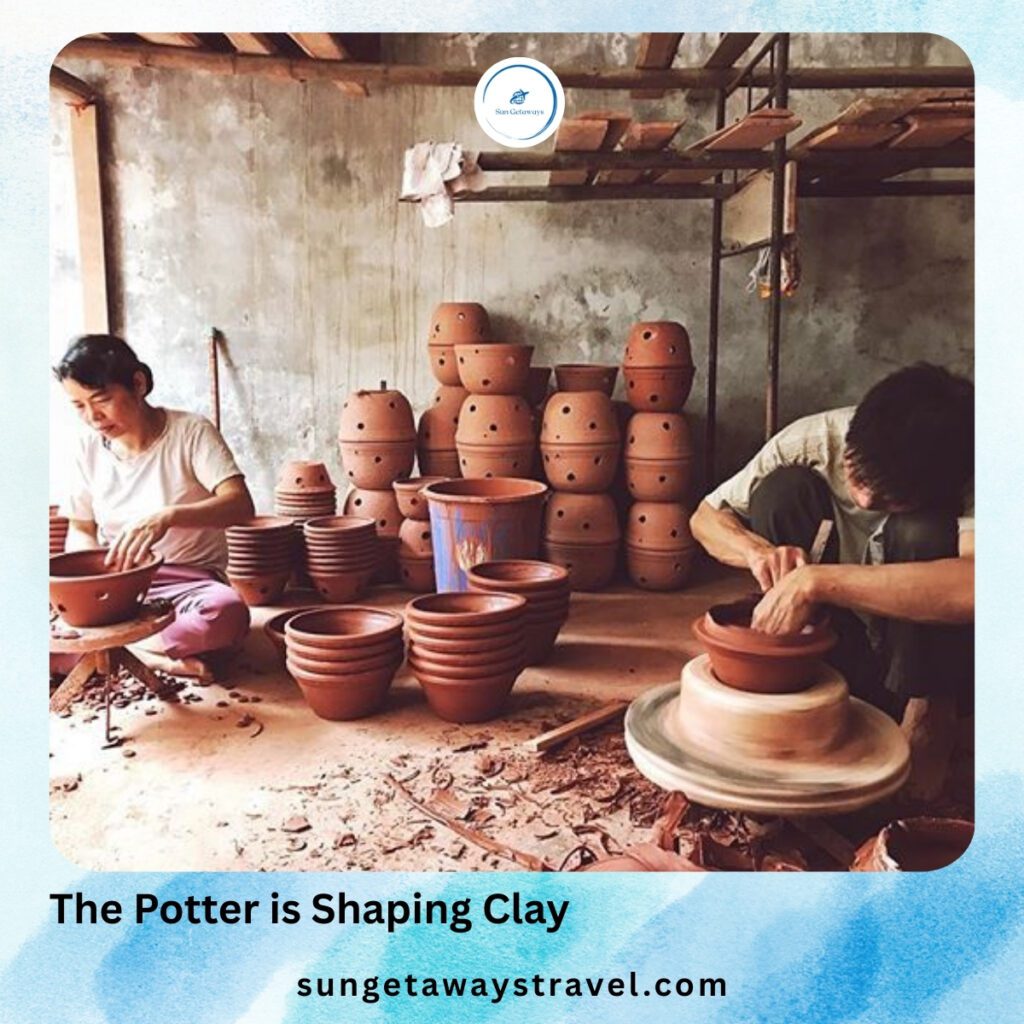

Artisans wake early to knead clay and load kilns. Conversations drift through the alleys about glaze mixtures or orders from Hanoi. Even festivals in Bat Trang revolve around pottery: rituals to honor craft ancestors, community gatherings to celebrate new designs, and competitions to showcase skill.
This lifestyle embodies Vietnam’s broader cultural value of community. For travelers, it’s not simply about observing craft—it’s about entering a world where creativity and livelihood are inseparable.
4. Cultural Significance of Pottery in Vietnam
Pottery in Vietnam is more than household ware. It symbolizes continuity, spirituality, and artistic expression. Ceramics from Bat Trang have been used in temples, palaces, and family altars. Decorative motifs—dragons, lotuses, bamboo—carry symbolic meanings of strength, purity, and resilience.
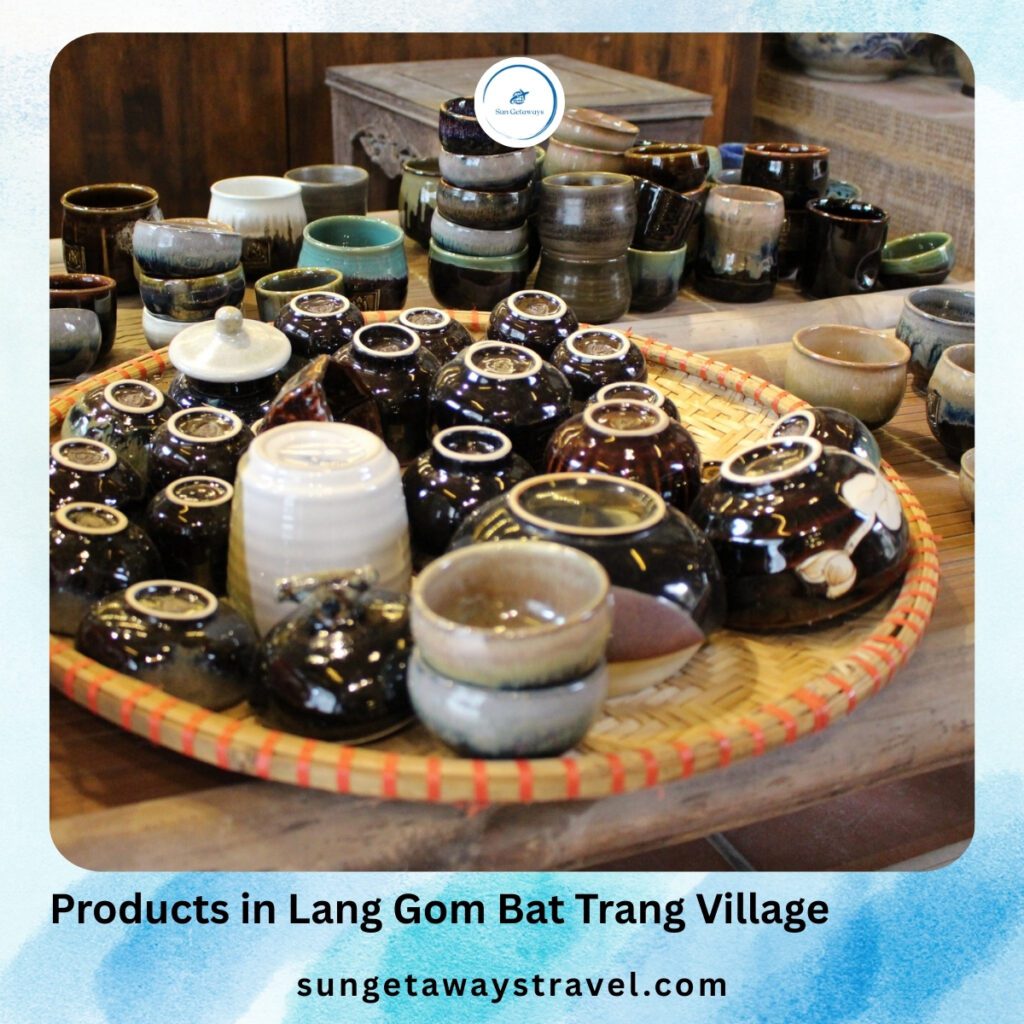

In Vietnamese culture, offering tea in a Bat Trang teacup or placing incense in a Bat Trang censer is a gesture that bridges the living with the ancestors. The history of Bat Trang pottery is thus woven into rituals, festivals, and daily acts of respect.
Scholars often note that Bat Trang ceramics are both utilitarian and artistic. They embody the Vietnamese philosophy of harmony between function and beauty. This duality explains why the village’s products have remained relevant for centuries, adapting to modern homes while preserving traditional symbolism.
5. Bat Trang in the Eyes of International Travelers
Foreign visitors often describe Bat Trang Pottery Village as one of the most authentic cultural experiences near Hanoi. Unlike commercial tourist hubs, Bat Trang offers direct interaction with artisans, allowing travelers to see, touch, and participate in the craft.


For international guests, the visit feels like cultural immersion. Some compare it to pottery towns in Japan or Korea, but with a distinctly Vietnamese character: warm hospitality, communal meals, and a playful approach to artistry.
Travelers also appreciate how the village bridges past and present. They can admire centuries-old techniques in family-run workshops and then step into the sleek Bat Trang Pottery Museum, which presents ceramics in a modern architectural space.
👉 Got questions or need help planning your visit? Feel free to reach out here — we’re happy to assist!
6. Things to Do in Bat Trang Pottery Village – A Complete Guide
Now that you know the heritage and culture, what remains are the practical things to do in Bat Trang Pottery Village. These activities transform your visit from observation into participation:
6.1. Try Your Hand at Pottery – Become an “Apprentice Artisan”
One of the most immersive activities in Bat Trang is sitting at a traditional potter’s wheel and shaping clay with your own hands. Visitors are guided by local artisans who patiently teach the basics of centering clay, adjusting wheel speed, and forming symmetrical shapes. Whether you’re making a bowl, cup, or quirky figurine, the process is both relaxing and creatively stimulating. It’s a rare chance to connect with centuries-old craftsmanship in a deeply personal way.


After shaping your piece, you can decorate it with glazes or hand-painted patterns. Some studios offer firing services so you can receive your finished product later, while others let you take the raw version home as a keepsake. This activity is perfect for families, couples, or solo travelers looking for a meaningful souvenir. Don’t worry about perfection—every fingerprint and curve tells your story.
6.2. Visit Traditional Workshops – See How Clay Becomes Art
Bat Trang’s workshops offer a behind-the-scenes look at how clay transforms into art. You’ll witness each stage of production: selecting and kneading clay, shaping, drying, glazing, and firing in massive kilns. The atmosphere is earthy and authentic, with artisans working quietly and skillfully in open-air studios. It’s a humbling reminder of the dedication behind every ceramic piece.


Many workshops are family-run, with generations of potters preserving traditional techniques. Some artisans are happy to share stories about their craft, their lineage, and the evolution of Bat Trang’s styles. You’ll also find oversized vases, intricate statues, and experimental designs that push the boundaries of ceramic art. It’s not just a visit—it’s a cultural exchange.
6.3. Shop at the Pottery Market – A Handcrafted Paradise
The pottery market in Bat Trang is a vibrant maze of stalls overflowing with handcrafted goods. From everyday tableware to elaborate altar pieces, the variety is staggering. You’ll find items in classic blue-and-white motifs, crackled glaze finishes, and modern minimalist styles. Prices are reasonable, and bargaining is part of the fun.
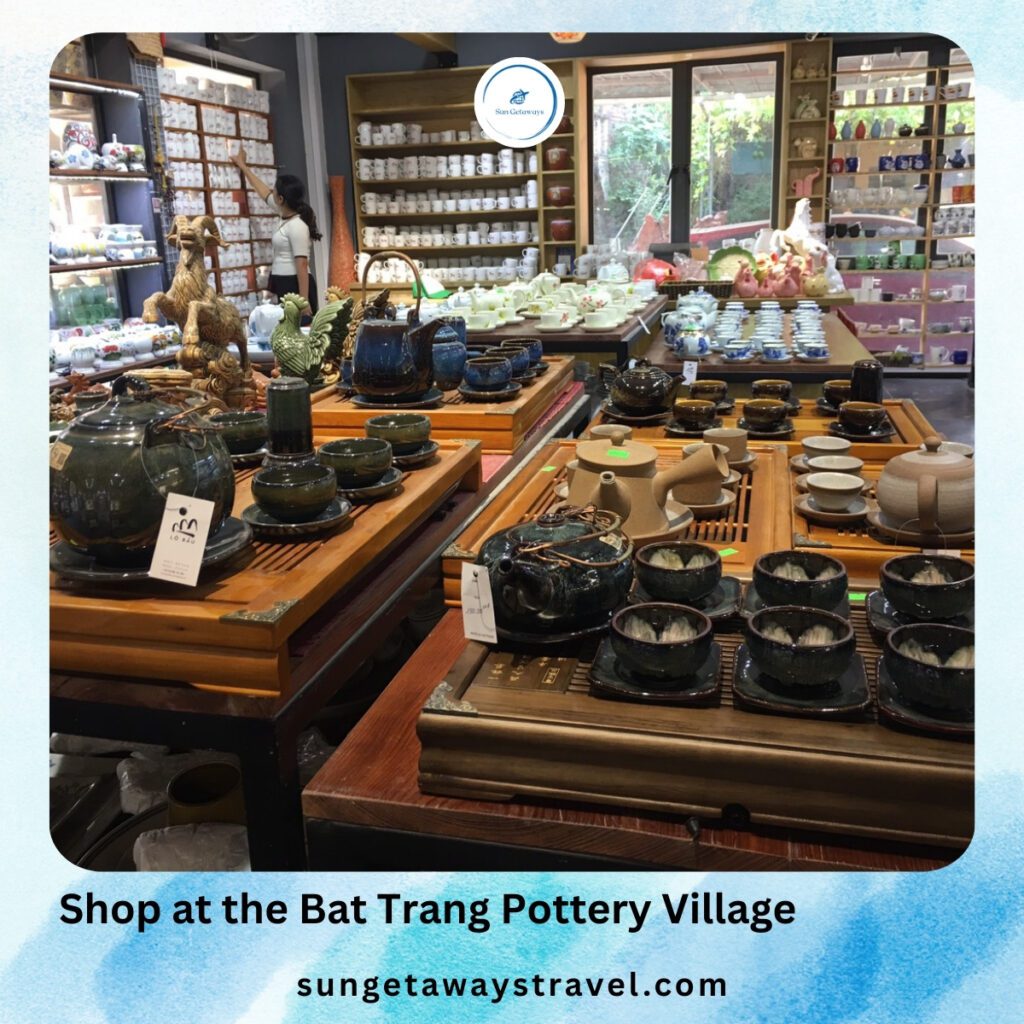

Whether you’re shopping for home decor, gifts, or collectibles, the market has something for every taste. Sellers are friendly and often explain the meaning behind certain designs or symbols. Many offer careful packaging for fragile items, and some even arrange delivery. It’s a shopper’s paradise for anyone who appreciates handmade beauty.
6.4. Explore the Bat Trang Pottery Museum – Where Tradition Meets Modern Design
The Bat Trang Pottery Museum is a stunning blend of tradition and modern architecture. Its spiral design mimics the motion of a potter’s wheel, inviting visitors to journey through layers of ceramic history. Inside, you’ll find curated exhibits of ancient pottery, contemporary works, and interactive installations. The museum also hosts workshops, tea tastings, and cultural events.


Each floor offers a different perspective on Bat Trang’s legacy—from its humble beginnings to its global recognition. The rooftop café and viewing deck provide a peaceful spot to reflect and enjoy the village’s skyline. Whether you’re an art lover or a curious traveler, the museum adds depth to your visit. It’s not just a gallery—it’s a celebration of Vietnamese identity.
6.5. Taste Local Cuisine – Simple, Flavorful, Affordable
Among the most authentic things to do in Bat Trang Pottery Village is sampling its humble yet flavorful local dishes. From bánh tẻ (rice cake) to bún riêu (crab noodle soup), the food here reflects the simplicity and warmth of village life. Many eateries are family-run, tucked into narrow alleys or nestled beside pottery stalls. The ingredients are fresh, the recipes are traditional, and the atmosphere is cozy—perfect for a midday break between pottery sessions.


What makes the culinary experience special is its connection to the history of Bat Trang pottery. Meals are often served in handmade ceramic bowls and cups, adding a tactile layer to your dining experience. Some cafés even let you sip herbal tea from a cup you crafted earlier in the day. It’s a beautiful fusion of taste and tradition, where food and craft come together in one sensory journey.
6.6. Snap Stunning Photos – Every Corner Is a Backdrop
If you’re wondering about photogenic things to do in Bat Trang Pottery Village, look no further than its winding alleys and rustic textures. The village is a visual feast—brick walls covered in moss, ancient kilns, and ceramic murals that stretch across courtyards. Every corner offers a backdrop that feels both timeless and artistic. Whether you’re snapping portraits or street-style shots, Bat Trang delivers effortlessly beautiful frames.


These photo spots also echo the history of Bat Trang pottery, with many walls and installations made from reclaimed ceramic pieces. Some alleys are lined with broken glaze tiles from decades past, forming mosaics that silently narrate the village’s evolution. Even the museum’s spiral architecture is designed to reflect the motion of a potter’s wheel. Capturing these moments isn’t just about aesthetics—it’s about preserving a living legacy.
6.7. Quick Activity Summary
| Activity | Brief Description |
| Wheel-throwing pottery | Shape clay into bowls or vases with guidance from local artisans. |
| Painting and decorating | Add glaze and hand-painted patterns to personalize your ceramic piece. |
| Workshop visit | Explore the full pottery-making process from raw clay to finished product. |
| Museum tour | Discover ancient and modern ceramics while learning about Bat Trang’s heritage. |
| Shopping at pottery market | Browse handcrafted items ranging from tableware to decorative pieces. |
| Local food tasting | Enjoy traditional Vietnamese dishes in a cozy village setting. |
| Photo opportunities | Capture artistic shots at ceramic walls, kilns, and museum architecture. |
These activities are not just entertainment; they are living bridges between you and centuries of craft. For travelers, exploring these things to do in Bat Trang Pottery Village turns history into experience.
👉 Want a deeper dive into Bat Trang’s architecture, culture, and hidden gems — all tailored to your interests? Customize your experience via Sun Getaways Travel
FAQs – Bat Trang Pottery Village
Q1: What is the significance of Bat Trang compared to other pottery villages?
Bat Trang stands out for its longevity and international influence. While other villages produce regional styles, Bat Trang ceramics reached royal courts and overseas markets, shaping Vietnam’s cultural reputation abroad.
Q2: How far is Bat Trang from Hanoi?
It is about 13 kilometers southeast of Hanoi, easily accessible by bus, taxi, or motorbike. The short distance makes it a popular half-day or full-day trip.
Q3: What types of ceramics are made here?
Products range from everyday bowls and teapots to giant decorative vases, religious statues, and modern design pieces. This diversity reflects both tradition and innovation.
Q4: Can visitors participate in pottery making?
Yes. Many workshops welcome guests to try shaping clay and painting designs. This hands-on activity is a highlight for both children and adults.
Q5: Is Bat Trang suitable for families?
Absolutely. Children enjoy playing with clay, while adults appreciate the cultural depth. The village also offers food stalls and markets, making it a well-rounded destination.
Q6: What should I prepare before visiting Bat Trang Pottery Village?
Absolutely! Comfortable clothes you don’t mind getting a bit messy are ideal, especially if you plan to try pottery-making. Bring cash for small purchases at local stalls, and don’t forget sun protection if you’re walking around. Most importantly, make sure you have a reliable mobile connection to navigate, translate, or share your experience — grab a local SIM card before you go!
👉 If you’re a foreign visitor who’s never been to Bat Trang, check out these essential tips to make the most of your experience — from what to wear to how to stay connected.
Conclusion – Why Bat Trang Still Matters Today
Bat Trang Pottery Village is more than a destination—it is a dialogue between past and present, between artisans and travelers, between clay and imagination. Its alleys preserve centuries of tradition, while its workshops invite you to be part of that tradition.
Whether you’re drawn by the history of Bat Trang pottery, the artistry of its people, or the immersive things to do in Bat Trang Pottery Village, the experience will leave a mark. The village proves that heritage is not static—it lives on in every bowl shaped, every story told, and every visitor who carries a piece of Bat Trang home.
In the end, Bat Trang is not just about pottery. It’s about culture, community, and the enduring human desire to turn earth into art.
👉 Curious about more unique experiences? Browse our full collection of experiences. There’s something for every kind of traveler!
Ask a question
Leave a Comment (0)
No questions yet. Be the first to ask a question!









